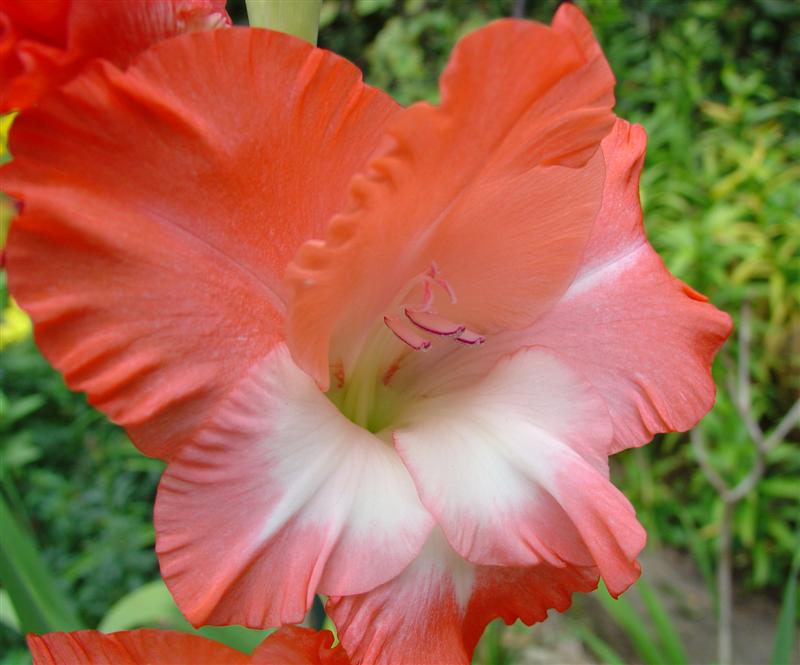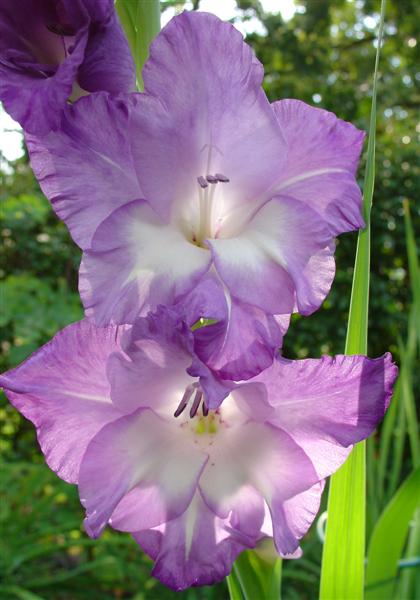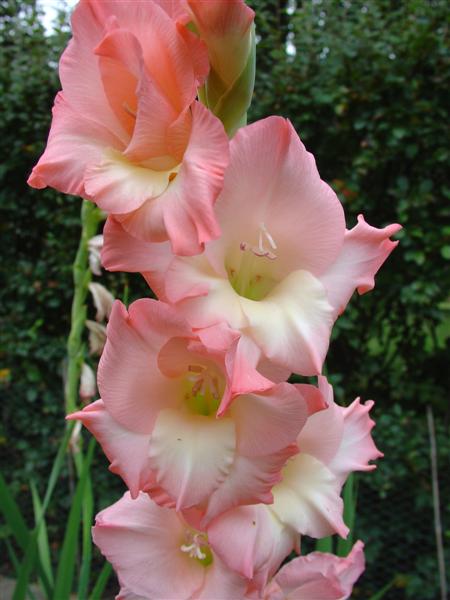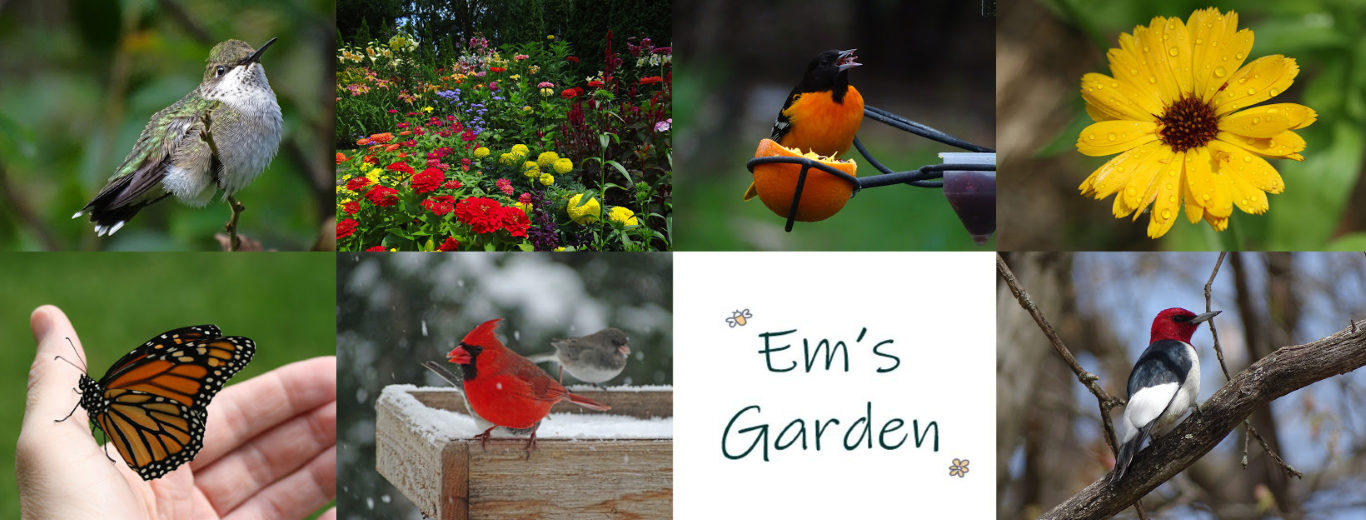
I’m a sucker for gladiolas. The corms (similar to bulbs) are relatively cheap, and all it takes is a few pretty pictures in a garden catalog and I’m off to the races. Years ago I had trouble with chipmunks digging up the corms, but they’ve since honed their palates on more expensive bulbs like Asiatic lilies and have left my gladiolas alone.
Glads are easy to grow. Just plant the corms in 4-6″ of well-drained soil. It’s recommended you plant them in full sun, but I’ve stuck leftover corms in partial shade and the plants did just fine. Their foliage takes up little room, so it’s easy to tuck glads here and there throughout the garden.
It’s best to stake even the smaller varieties because all glads can get a little top-heavy when they’re blooming, and a heavy downpour can take them down pretty easily.

Gladiolas are geotropic which means the blooms bend away from gravity. If you cut the flowers, try to keep them vertical until you can put them in a vase. If you lay them on the ground for a time they will begin to bend and curve upward and they may not straighten out again completely when you try to arrange them later.

Some glads are hardy to Zone 4, but with others you need to treat them as annuals or dig up the corms in the fall and store them over winter. I never remember to dig up the non-hardy ones but I’ve had quite a few of them survive winter anyway and surprise me the following summer.
The biggest challenge with growing glads is figuring out how to choose from among the dizzying array of colors and bicolors. It’s amazing how much beauty can explode from one homely little corm.
